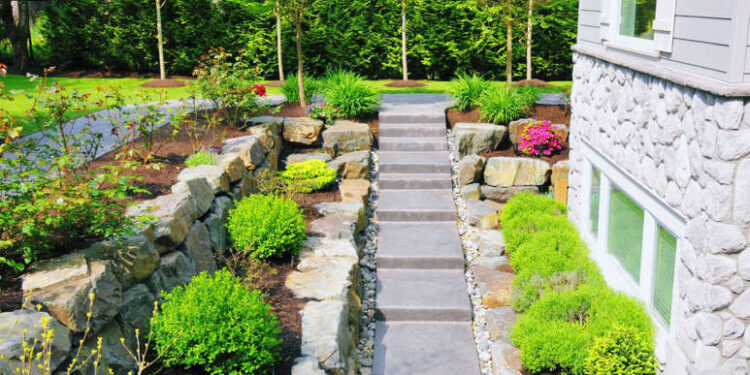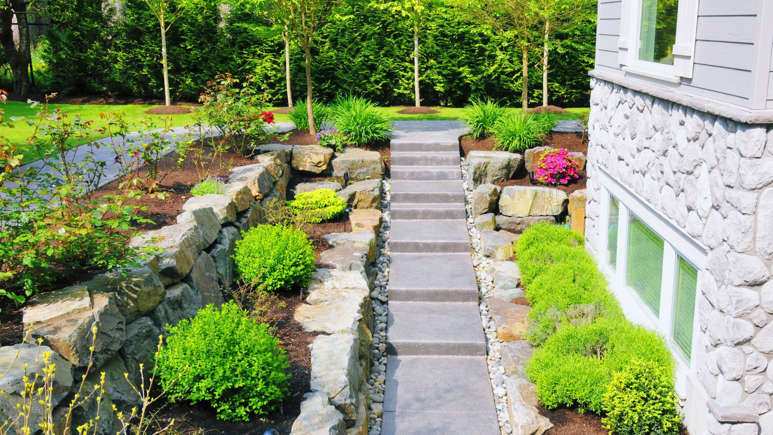How Smart Landscaping Choices Can Transform Residential Spaces

Key takeaways:
- Thoughtful landscaping can enhance curb appeal, boost property value, and provide environmental benefits.
- Native plants, efficient irrigation, and sustainable materials are gaining traction in residential landscaping.
- Data show that well-maintained lawns and gardens contribute to community well-being and support wildlife.
- Experts recommend integrating smart technology and sustainable practices for long-term success.

Table of Contents
- 1 Why Landscaping Matters in Residential Neighborhoods
- 2 Trends Shaping Modern Landscaping
- 3 Using Native Plants for Low-Maintenance Yards
- 4 Water Conservation Through Smart Irrigation
- 5 Creating Functional Outdoor Living Areas
- 6 Boosting Home Value with Curb Appeal
- 7 Sustainable Practices for Long-Term Benefits
- 8
- 9 The Power of Thoughtful Design
Why Landscaping Matters in Residential Neighborhoods
Every yard tells a story, and smart landscaping can completely change how that story unfolds. It isn’t simply about having attractive flower beds or a well-mowed lawn; it’s about creating an outdoor environment that enhances daily living, supports local ecosystems, and builds community pride. People are increasingly interested in yards that offer more than just a nice view from the kitchen window. Lawns become outdoor sanctuaries for relaxation, children’s play, and social gatherings. The health and appeal of these spaces often depend on the expertise behind their care. Many local homeowners seek professional advice, such as the Middletown lawn care company’s pro tips for a healthy lawn, to maintain lush, thriving yards throughout the seasons.
Research from the EPA highlights the significant impact that green spaces can have on the environment. Lawns, gardens, and strategically placed trees cut urban heat, clean the air, and improve water absorption in neighborhoods. These benefits aren’t just scientific footnotes—they are tangible realities that homeowners feel each day: cooler patios, cleaner breezes, and driveways that don’t flood as easily during storms. In many ways, a vibrant landscape represents a healthy connection between home and the natural world.
Trends Shaping Modern Landscaping
As the climate shifts and urban environments expand, residential landscaping trends are evolving to reflect changing values and new realities. The classic green carpet of grass is giving way to smart, water-wise alternatives, such as those offered by GreenEdge Tree + Turf, which provide innovative solutions for modern homeowners. Rain gardens, which redirect runoff and filter pollutants, are becoming increasingly popular in suburban yards. Mulching pathways not only adds rustic charm but also helps lock in soil moisture and keep weeds at bay. Homeowners are also keen to reduce weekly chores, driving interest in installations that cut down on mowing, watering, and fertilizing.
According to the latest reports on sustainable landscaping trends, current preferences favor pollinator-friendly gardens, edible landscaping, and the integration of smart technology. Lawns are designed to support bees and butterflies as much as they are for weekend barbeques. New materials and efficient systems now compete with tradition, as residents realize they can achieve both beauty and sustainability. The move toward intentional, eco-friendly choices is not a fad—it’s rapidly becoming the gold standard for urban, suburban, and rural properties alike.
Using Native Plants for Low-Maintenance Yards
One of the most effective ways to simplify yard work and support local habitats is to plant native species that thrive in your region. Native plants have evolved in tandem with local weather patterns, insects, and soils, which means they’ll grow strong without requiring heavy input. Grasses like little bluestem or switchgrass, wildflowers such as coneflower or black-eyed Susan, and regionally adapted shrubs can turn a barren patch into a thriving mini-ecosystem.
Case studies show homeowners who replace portions of their lawns with native beds often spend less time weeding, watering, and treating pests. These low-maintenance spaces, rich in color and texture, become magnets for songbirds, butterflies, and beneficial pollinators. Over time, this hands-off approach also helps build healthier soil, which in turn reduces the need for synthetic fertilizers and herbicides. For anyone feeling the drain of constant garden chores, embracing native plants can transform both the landscape and the gardening experience itself.
Water Conservation Through Smart Irrigation
Water conservation sits at the heart of sustainable landscaping, especially as drought conditions become more frequent nationwide. According to studies, up to 30 percent of household water is used outdoors, much of it lost to inefficient sprinklers that overwater or fail to reach the target. By adopting efficient watering practices, homeowners can maintain healthy landscapes while conserving precious resources.
Drip irrigation, rain sensors, and Wi-Fi-enabled controllers are now within reach for many, providing just the right amount of moisture to each plant. Consider setting up flow meters or rain barrels to make the most of spring storms, rather than letting valuable water run off into the street. When adjusting watering schedules to match weather patterns, landscapes flourish even during heat waves, with the added benefit of reduced utility bills. The EPA estimates remind us that outdoor water use can be significantly reduced with these upgrades—an appealing prospect for both eco-conscious and budget-minded homeowners.
Creating Functional Outdoor Living Areas
A thoughtfully designed yard extends your living space, creating new opportunities for entertainment, dining, and quiet retreat. It’s not just about elaborate patios or outdoor kitchens; sometimes, a simple bench under a tree or a hammock strung in a shady corner makes a world of difference. Families are carving out purposeful spaces, including children’s play zones, dog runs, vegetable patches, and reading nooks, that reflect their lifestyles.
Contemporary landscapes often feature multi-use areas, such as a deck for meals, a fire pit for gatherings, or stone paths for easy access to the garden. Strategic tree planting or privacy hedges add comfort and style, while lighting along walkways and seating areas extends outdoor time well after sunset. Homeowners choosing smart materials and flexible layouts report greater satisfaction and are more likely to use their yards throughout the year. These spaces foster a deeper relationship between families and the natural world right outside their back doors.
Boosting Home Value with Curb Appeal
The first thing people notice about a home is its exterior, making curb appeal a powerful asset for any homeowner. Well-maintained landscaping can add significant value, sometimes translating to thousands of dollars more at resale. Real estate professionals consistently cite good landscaping as a top factor in home attractiveness, often trumping interior renovations in initial buyer impressions.
Quick fixes, such as adding fresh mulch, power washing walkways, and planting seasonal flowers, are surprisingly affordable ways to boost appeal instantly. More ambitious improvements—such as stone borders, creative lighting, or drought-tolerant gardens—require a larger investment but reward you with lower long-term maintenance costs. It’s not just about standing out on the block; attractive, easy-to-care-for yards encourage future owners to keep the neighborhood looking its best.
Sustainable Practices for Long-Term Benefits
Building a yard that benefits both people and the planet starts with small, sustainable changes. Composting kitchen scraps and fall leaves enriches soil, keeps waste out of landfills, and cuts down on fertilizer costs. Spreading bark, straw, or gravel mulch under shrubs holds in vital moisture while suppressing weeds and keeping plant roots cool in summer. Strategic planting of native trees and shrubs creates windbreaks that reduce heating costs in winter and cooling bills in summer.
Transitioning even a portion of your traditional grass lawn to wildflowers, low-growing groundcovers, or no-mow fescues reduces reliance on gasoline-powered mowers and chemical treatments. Over time, these habits ease your workload and create dynamic landscapes that combine beauty, resilience, and economic sense in a cohesive design.
The Power of Thoughtful Design
A successful landscape is an intersection of purpose, beauty, and stewardship. When lawns and gardens are planned with intention, they reward homeowners with comfort, connection, and even lifelong learning. Adopting expert advice, integrating innovative practices, and drawing on science-backed resources yields outdoor spaces that continually improve over time. Every choice you make has a ripple effect—beautifying your immediate world while nurturing the natural one around you.






